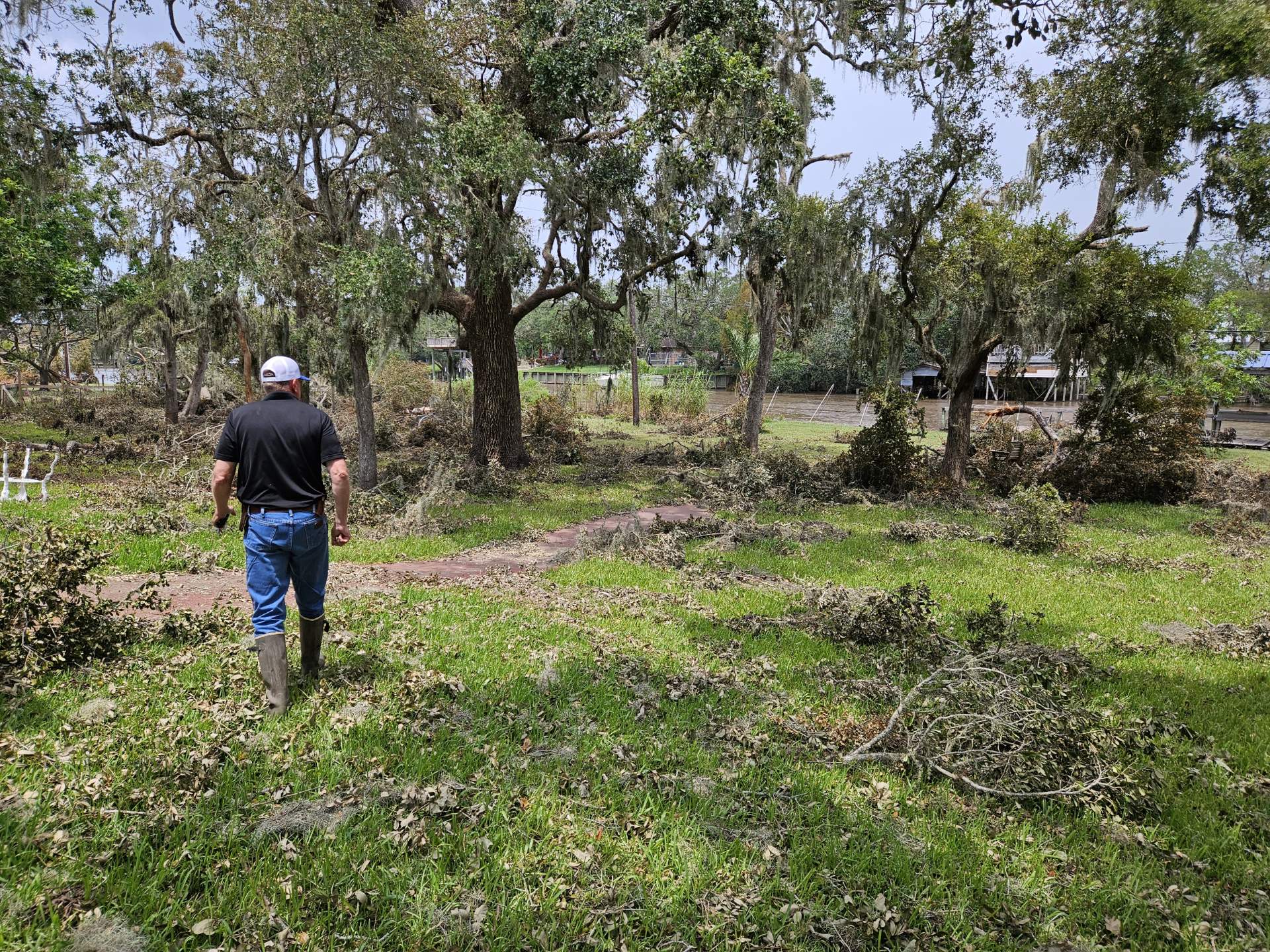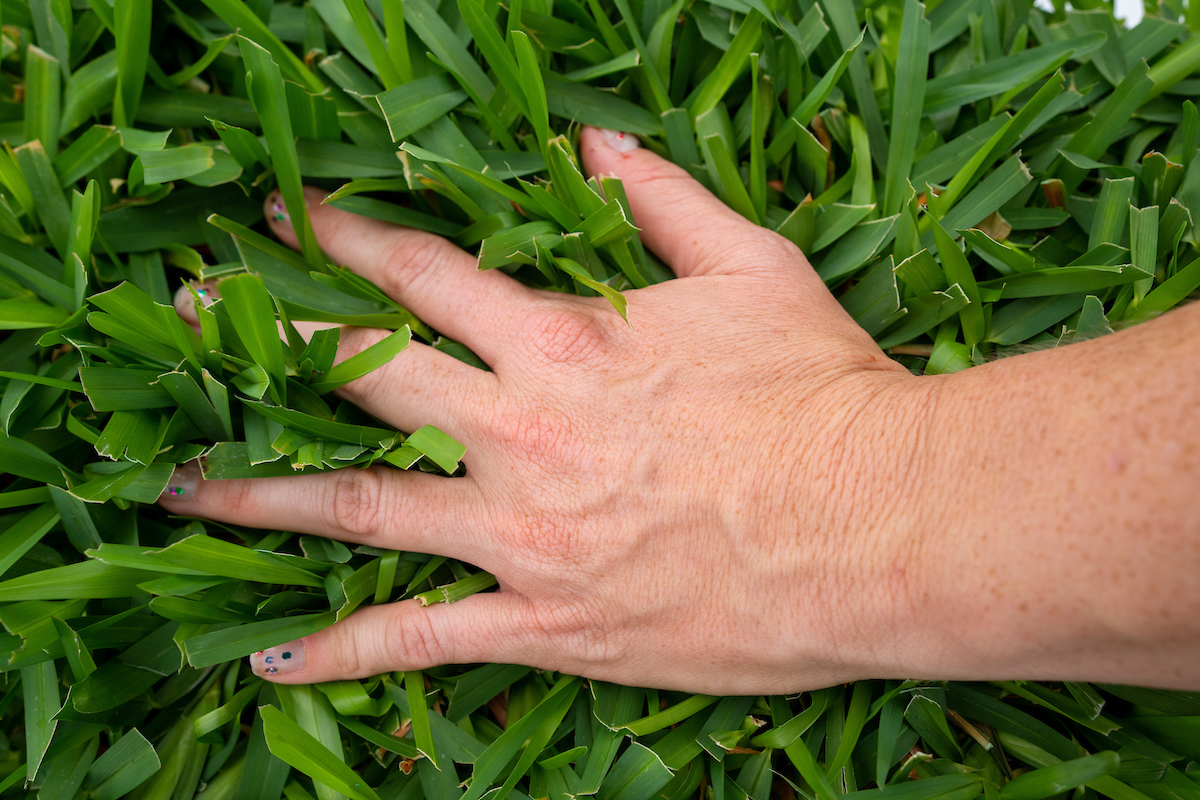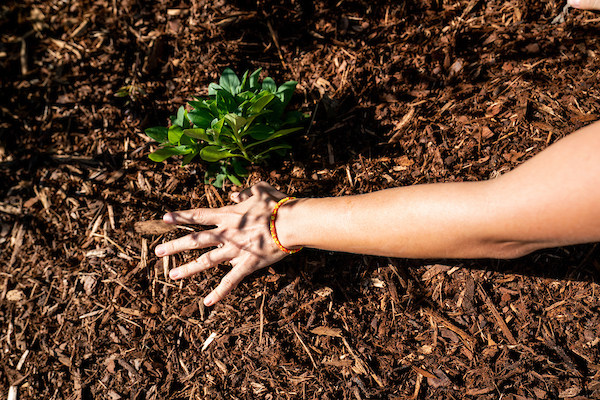Landscaping to help protect from wildfires
Texas A&M AgriLife experts offer guidance on creating a more fire-wise landscape
Many landscapes were lost in the fires that burned rampantly throughout the Texas Panhandle, leaving some homeowners wondering what trees, shrubs and other plant materials to remove or replace to create a more fire-wise landscape for the future.
Assessing trees and shrubs after a wildfire
“The main thing you want to check for after a tree or shrub has been through a fire is if it has live buds and living cambium,” said Christina Reid, Texas A&M AgriLife Extension Service horticulturist for Lubbock County. “If it doesn’t have either of these living tissues, it’s time to start the removal process.”
Cambium tissue provides unspecialized cells to promote growth, and the cambium layer can be found between the xylem and phloem structures of the plant.
“Look for moist, green or cream-colored inner bark,” Reid said. “If the inner bark is dried and brown, it likely has been killed by heat. But if your trees and shrubs have live buds and living cambium throughout much of their canopy, they have a better chance of survival. Water them and add compost back to the soil as soon as safely possible.”
She said if the trunk of the tree or shrub has been burned and bark is gone, wrapping it will help prevent pest pressure.
According to Texas A&M Forest Service, partially burned but otherwise healthy deciduous trees may still be able to produce new leaves and stems – sometimes even producing sprouts at their base. Most tree species are not likely to survive if more than 50% of their circumference is damaged, but hardwoods and pines often recover from 100% crown scorch in periods of normal rainfall if the roots, the stem and the buds in the crown are uninjured.
However, significant destruction of the vascular tissue in one of the tree’s three main parts – the roots, stem or crown — will usually be lethal.
More information on how to assess trees after a fire can be found in the Texas A&M Forest Service publications Post-Fire Evaluation of Hardwood Trees and Post-Fire Evaluation of Pine Trees.
Choosing the right fire-resistant plant materials
Whether it’s replanting after a fire or just landscaping in general, one of the most important things to remember is to plant trees, shrubs other plant materials that are suitable to your land and region. A healthy, well-maintained landscape that includes fire-resistant plant materials is important to the survival of a home during a wildfire.

“Plants with a high moisture content do not readily ignite and can withstand higher temperatures, while plants that have resins, oils and volatiles are highly flammable and should be kept away from the home,” said Ethan Law, Texas A&M Forest Service woodland ecologist serving 26 Panhandle counties. “Highly combustible plants produce more heat as well as greater flame lengths.”
He said slower-growing plants reduce the amount of maintenance time and low-growing plants help maintain the vertical separation of fuels.
“Less dense plants produce less material to burn, while more compact plants produce more fuel to burn,” Law said. “Generally, deciduous trees are preferred to evergreen trees as some evergreens are very high in volatile compounds.”
He suggestred choosing trees that have minimal branching down low, as that will help keep them from igniting during a wildfire.
Seedling trees are typically an economical and efficient way to handle planting multiple trees as they are more cost effective at scale and reduce handling issues that arise with larger trees. When replanting trees, it’s best to use a mixture of bareroot and containerized hardwoods.
“The benefits of bareroot seedlings are that they are lighter and easier to handle and have been grown outside in native soil,” Law said. “Containerized seedlings are typically in tree tubes and will have soil and more fine roots.”
In Texas, it’s best to wait until fall to replant trees when there is typically more rainfall, which means the soil will have sufficient moisture and nutrients. Moist soil makes it easier for newly planted trees to take root and absorb the nutrients needed to thrive.
Law said some of the more fire-resistant trees for the Panhandle include pecan, Texas redbud and Texas red oak.
Reid added that other species of fire-adapted or fire-wise trees that grow well in the Panhandle include bur oak, desert willow, Chinese pistache and golden rain tree. More fire-resistant native tree species for the area include net-leaf hackberry, willow and western soapberry.
More information on trees that grow well in the Panhandle can be found using Texas A&M Forest Service’s tree selector feature or by visiting AgriLife Extension’s Texas Tree Planting Guide.
Some fire-wise shrubs and perennials for the area include primrose, aster, columbine, liatris, lantana, Turk’s cap, beauty berry, crape myrtle, abelia, agarita and boxwood.
“When planting close to the home, forb species are preferred over full shrubs for fire resistance,” Law said.
Tansy aster, gay feather and other wildflowers are fire-resistant and typically do well in the Panhandle climate. Some of the shrubs that do well include Texas lantana, four-wing saltbush and buttonbush.
Fire-wise landscaping and a defensible space
Fire-resistant landscaping creates a separation between the fuels a fire needs to continue burning. Those fuels may include the trees surrounding your property, the plants used for landscaping and even the home itself.
“The goal of fire-resistant landscaping is to lower the intensity of a wildfire as it approaches your home, and the first 30 feet from your home in all directions is called the defensible space,” said Juan Rodriguez, wildland-urban interface coordinator, Amarillo, with Texas A&M Forest Service’s Panhandle Branch incident response.

“Maintaining defensible space around the home greatly improves its chance of surviving a wildfire.”
Rodriguez said in an environment with low humidity, high temperatures and high winds, fire intensity can be very extreme. “Even here in the High Plains where our primary fuel is grass, we have seen flame lengths of 20-30 feet,” he said.
When we have structures surrounded by heavier, more volatile fuels that go untreated or unmaintained, they can be at higher risk to heat and flame exposure. Embers carried in the wind and settling into openings around the home can sit and smolder, going unnoticed and ultimately catching the home on fire.
Rodriguez said to help your landscape become more fire resistant, plant along the contour of your property and avoid any straight lines of disturbed soil as water will follow that groove.
Erin Jones, AgriLife Extension horticulturist for Randall County, recommends reducing the amount of flammable material near homes and structures by pruning any dense branches or shedding tree bark.
“Removing fallen leaves as well as tall, dry grasses while using non-combustible materials, such as rocks, turf grasses and flame-resistant mulches, can also help prevent the spread of fires,” she said. “Additionally, hydrated plant materials don’t readily burn so keeping plants well-watered can help.”
To develop a defensible space around the home, Texas A&M Forest Service suggests designing a landscape based on home ignition zones. These are: the immediate zone, 0-5 feet from the home; the intermediate zone, 5-30 feet from the home; and the extended zone, 30-100 feet from the home.
- The immediate zone — Xeriscaping is encouraged, but if there are plants, they should be green, healthy and low to the ground. They should also be spaced well apart and not located too close to any windows. For the house, seal any openings where embers can get in, repair loose or damaged window screens, install metal mesh over vents and clear debris under porches, in gutters or in any openings around home.
- The intermediate zone — Landscaping or hardscaping here can create breaks to help influence and decrease fire behavior. The landscaping in this zone should typically consist of more fire-resistant trees, shrubs and grass. Well-maintained lawns or short grasses, even wildflowers, can be used. After that, incorporate fire-resistant shrubs and trees.
- The extended zone — Here the goal is to interrupt the fire’s path and slow down the speed and intensity of the fire. Trees and vegetation can still be present, but it’s important to have good tree spacing and proper limbing to reduce torching. Consider practices such as shaded fuel breaks consisting of well-spaced, thinned-out trees.
More information on fire-wise plant selection, location and design elements can be found in the publication Firewise Landscaping In Texas.
The Texas A&M Forest Service provides additional information related to post-fire recovery, including preventing soil erosion, reforestation, tree planting, brush control and landscaping considerations.





